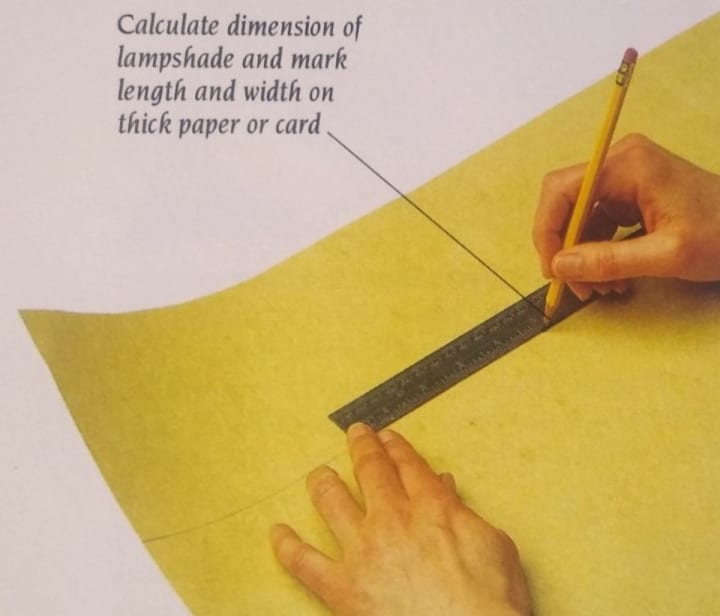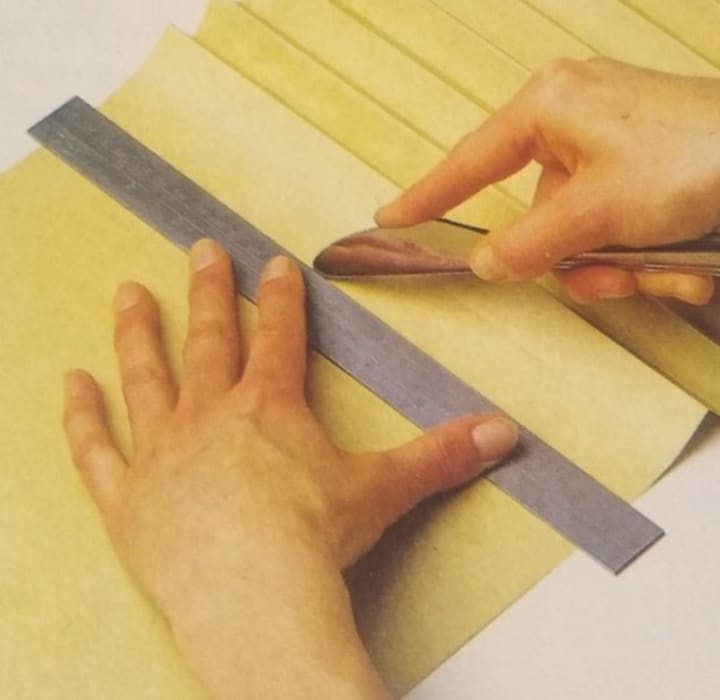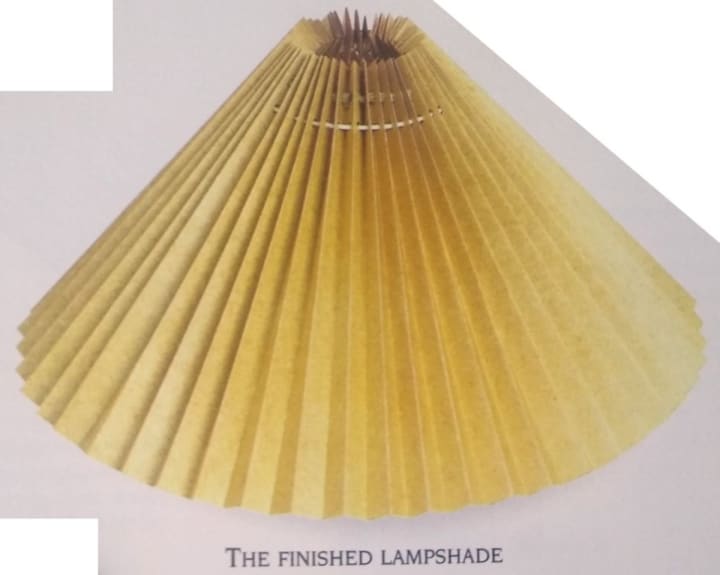Complete Guide on How to Make Paper Lampshades
A complete step by step guide on how to make paper lampshades

(Please ignore the bad lighting/editing or white cut-offs done on the images in this article, as the images are taken either from a very old book from my library or from a CCL raw image database)
(Links to certain articles are highlighted in a different colour. Click the link and it will take you the article accordingly)
Paper Lampshades
Making your own paper or card lampshades can be one of the most satisfying and rewarding home decorating projects. You can construct a variety of lampshades for lamp bases or pendant fittings, using plain or patterned paper.
The sides, which are supported by a standard lampshade ring with a gimbal, can either be pleated or flat. Self-reinforced by its own folds. A pleated paper lampshade can be made from a variety of weights of paper, ranging from cartridge to light card.

Pleated Paper Lampshade
Choose the paper card, and decide on the height of the finished shade. Select an appropriately sized, painted wire ring to support the lampshade at the top, and a length of ribbon. You will also need a hole punch, ruler, set square, craft knife, pencil, scissors, table knife, and glue.
Calculate the circumference of the completed lower edge of the lampshade. Decide how deep you wish the pleats to be. Depending on how deep the pleats are, multiply the circumference by approximately two to give the total length of paper required.
1. Measuring Up: Divide the circumference by the size of one pleat, in this case, 4 cm (1-1/2 in). Round up to an even number for the pleats needed. Using a ruler, set square, and sharp craft knife, cut the paper into one or more strips to the total length, by the height of the finished shade.

2. Marking Pleats: Mark intervals to correspond with the pleat depth along the top and bottom long edges on the wrong side of the paper. If you are using more than one length of paper, allow extra paper for the glued joins, continue the sequence of pleat marks across the joins, and keep the marks on the inside.

3. Folding Pleats: To make crisp pleats, press down and draw a crease line between the marks, using the blunt edge of a table knife or dressmakers scissors. Guide the blade with a metal ruler. Fold the creases into alternate pleats over the edge of a table. If joining strips to make up a complete length, glue the strips within a pleat.

4. Making Template: Cut out a piece of card measuring 5 x 2 cm (2 x 3/4 in). Draw a central line down the length of this template, and make two holes with a paper punch, one for the gathering ribbon, 2.5 cm (1 in) from the top edge, and the second a little over 2.5 cm (1 in) below this, for the supporting ring. Place the template on one side of each fold, and accurately mark the punch holes with a pencil.

5. Punching Holes: Grip each double pleat between the jaws of the punch at the marks, and punch through the paper. In this way, punch pairs of holes in the pleats. At each end of the paper, leave the final pleat unpunched ready for gluing.

Safety Notice
As there are people out there who are just beginning on their journey of complete home furnishing. I would advise taking great care when it comes to dealing with sharp knives, scissors and especially pins.
6. Cutting Across Holes: Using a sharp pair of scissors, cut across the lower row of holes to the inside, or wrong side of the fold, to allow the lampshades supporting ring to be inserted. Point the scissors down at a very slight angle when cutting.

7. Gluing Ends: Secure the ends of the paper by applying glue to the surface of each end fold. Join the two ends to make a complete pleat. Allow the glue to dry thoroughly.

8. Securing Ends: Hold the ends together until the glue has dried. Using the template, mark a pair of holes through the overlap. Punch the holes. Using the scissors, cut through the lower holes to the inside.

9. Threading Ribbon: Cut apiece of ribbon to fir through the top set of holes. Approximately 1 m (1 yd.) has to be cut. Wind tape around the leading end, and thread the ribbon through the holes.


About the Creator
Temoor Dar
💡Topic: Entrepreneur and Writer💡
♟️Hobbies: Traveling, Poems, Playing Chess and Solving Puzzles♟️
🎂Born: July 7, 1991🎂
📍Born in Stockholm, Sweden, and now a Londoner since 1996📍
📚Lifelong Learner📚
🌟Wisdom from Mentors🌟






Comments
There are no comments for this story
Be the first to respond and start the conversation.